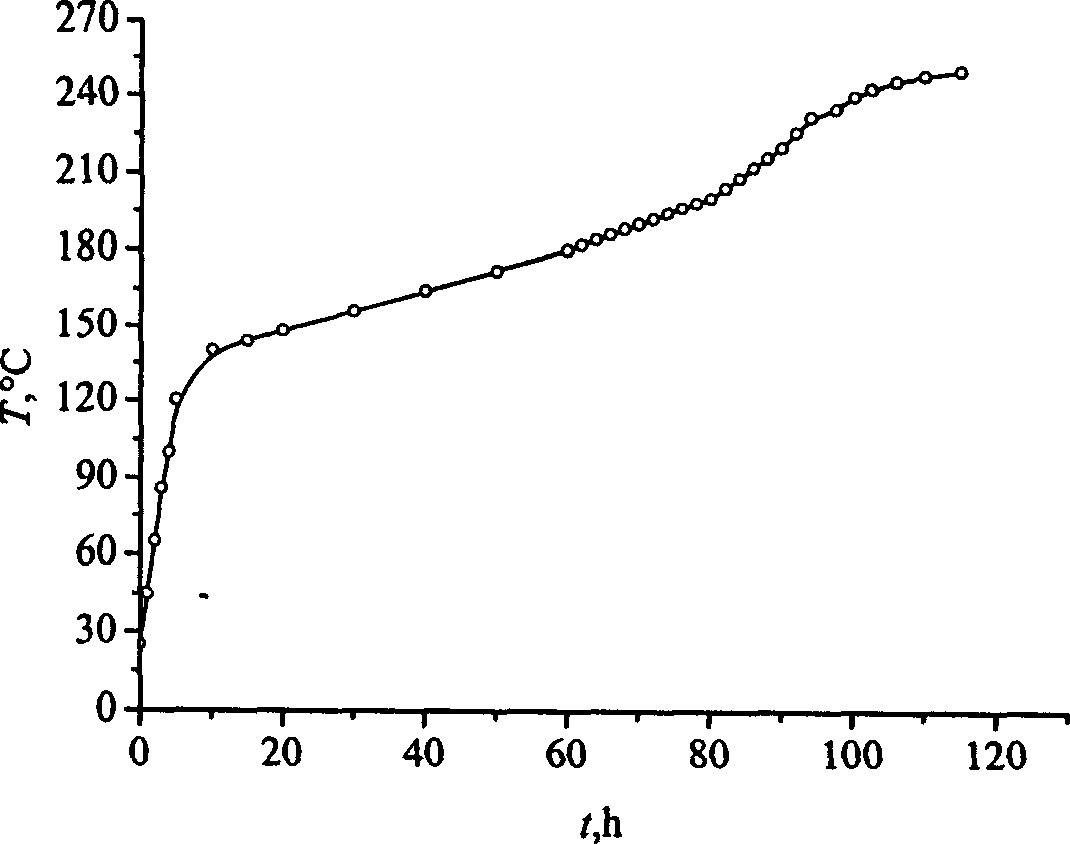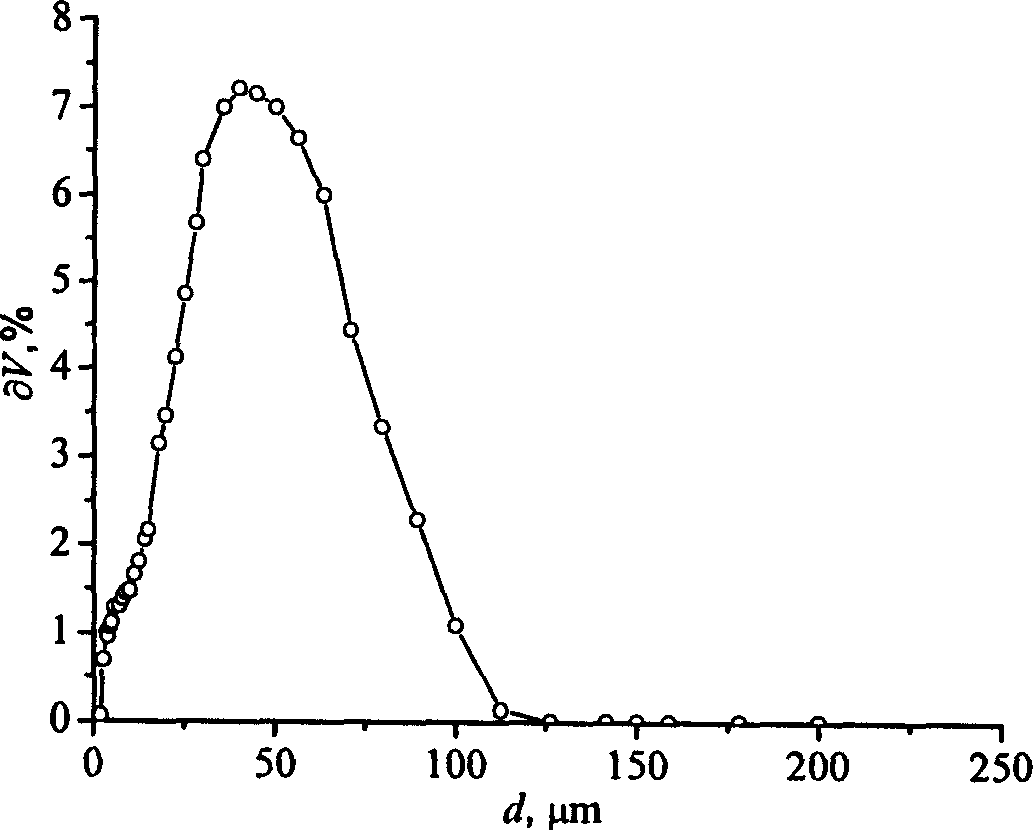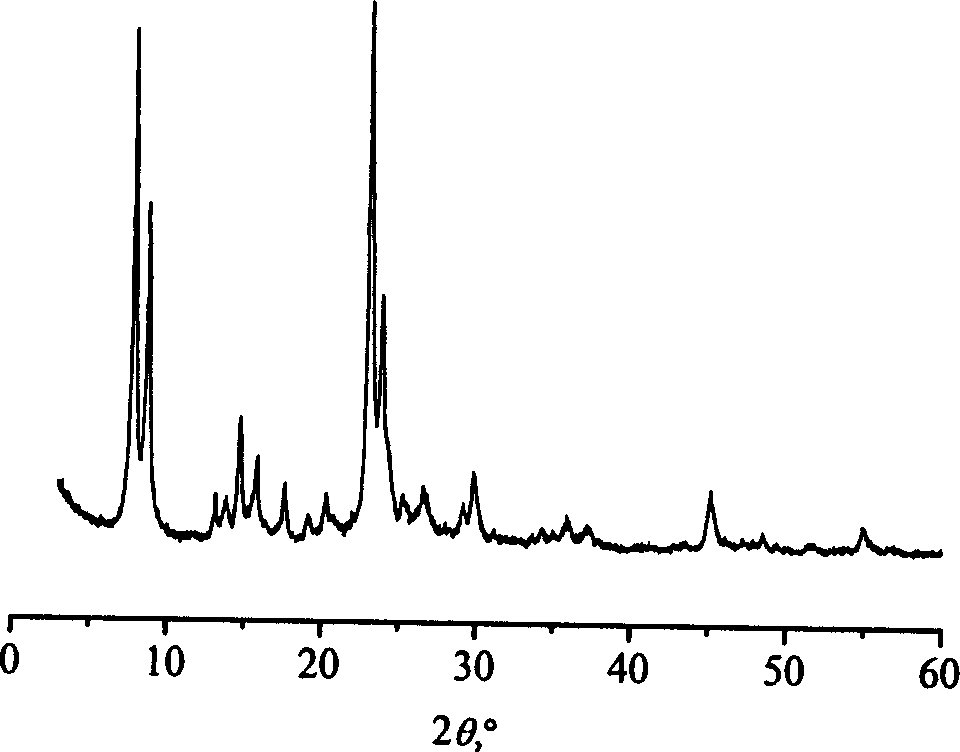Preparation technology of titanium silicon molecular sieve catalyst
A titanium-silicon molecular sieve and catalyst technology, which is applied in the field of preparation of titanium-silicon molecular sieve catalysts, can solve the problems of unsatisfactory catalyst strength and decreased catalyst activity.
- Summary
- Abstract
- Description
- Claims
- Application Information
AI Technical Summary
Problems solved by technology
Method used
Image
Examples
Embodiment 1
[0041] Add 400g of 12.5% tetrabutylammonium hydroxide aqueous solution into a 1000mL glass reactor, add 180g of tetraethyl silicate, stir vigorously for 15min, and raise the temperature to 50-60°C. Add 10 g of n-butyl titanate into 55 g of isopropanol, stir to dissolve, add the obtained n-butyl titanate isopropanol solution into the reactor dropwise, and stir at the same time. After the dropwise addition, continue to stir for 2 hours, and raise the temperature to At 85°C, remove the alcohol in the reaction system, add 200g of deionized water, stir for 1 hour, and let stand for one day to obtain raw gum.
[0042] Put the original rubber into a 1L stainless steel autoclave, seal the reactor, start stirring, and control the heating rate of the reactor through a temperature-programmed temperature controller. The heating curve of the reactor is as follows: figure 1 shown. After 120 hours, the temperature controller was turned off, the stirring was stopped, the temperature was natu...
Embodiment 2
[0114] The system of catechol and hydroquinone produced by hydroxylation of phenol was investigated. The reaction was carried out in a 1-liter four-neck flask, with 30% hydrogen peroxide as the oxidant and acetone as the solvent, the reaction temperature was 60°C, the hydrogen peroxide was added within 1 hour, and the reaction was continued for 10 hours after the dropwise addition. The ratio of reaction materials is: phenol: H 2 o 2 =3:1 (mol / mol), phenol:acetone=1:2 (v / v), phenol:catalyst=10:1 (mass ratio). Catalyst activity as H 2 o 2 The selectivity of forming quinone as an indicator:
[0115] λ = ( y CA + y HQ ) · w t / 110 w ...
Embodiment 3
[0119] The system of cyclohexane oxidation to cyclohexanone was investigated. Acetone was used as solvent and 30% hydrogen peroxide was used as oxidant, and the reaction was carried out in a stirred 100ml pressure reactor lined with polytetrafluoroethylene. 0.42g catalyst, 20ml acetone, 10.5ml 30% H 2 o 2 , 4ml cyclohexane was placed in a 100ml pressure vessel. The temperature was raised under stirring, the timing was started after the temperature reached 100° C., and the temperature was lowered after 8 hours of reaction. The catalyst in the product was filtered.
[0120] The composition of the sample is analyzed by gas chromatography. The chromatographic column is an OV-101 capillary column with a diameter of 0.2mm and a length of 60m. The hydrogen flame detection is carried out. The chromatographic analysis conditions are as follows:
[0121] Carrier gas (N 2 ) Reflux ratio: 35ml / min, FID temperature: 285°C, columnarity: 55°C. get h 2 o 2 The selectivity of λ=0.85. ...
PUM
| Property | Measurement | Unit |
|---|---|---|
| Diameter | aaaaa | aaaaa |
| Length | aaaaa | aaaaa |
Abstract
Description
Claims
Application Information
 Login to View More
Login to View More - R&D
- Intellectual Property
- Life Sciences
- Materials
- Tech Scout
- Unparalleled Data Quality
- Higher Quality Content
- 60% Fewer Hallucinations
Browse by: Latest US Patents, China's latest patents, Technical Efficacy Thesaurus, Application Domain, Technology Topic, Popular Technical Reports.
© 2025 PatSnap. All rights reserved.Legal|Privacy policy|Modern Slavery Act Transparency Statement|Sitemap|About US| Contact US: help@patsnap.com



